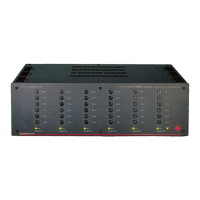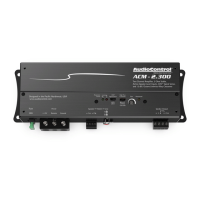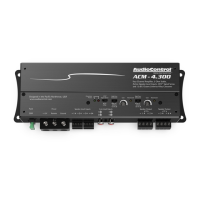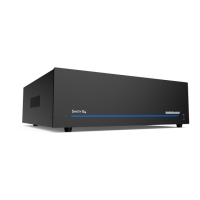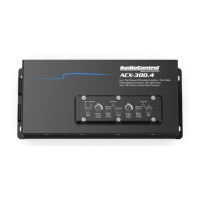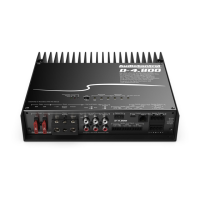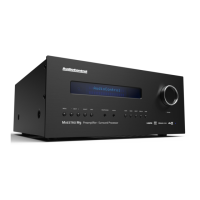®
-
+
-
+
-
+
-
+
-
+
-
+
-
+
-
+
-
+
-
+
-
+
-
+
11
12
9
10
7
8
5
6
3
4
1
2
*
*
*
*
*
*
Local
Trigger
Local
Trigger
Local
Trigger
Local
Trigger
Local
Trigger
Local
Trigger
Input Level
Input Level
Input Level
Input Level
Input Level
Input Level
Max
Max
Max
Max Max
Max
Min
Min
Min
MinMin
Min
1
3
5
79
11
2
4
6
810
12
Mono Mono
Mono
Mono Mono
Mono
Ethernet
Link
Data
Bypass
Buss Inputs
1
2
Signal
Sense
Out - Active
In - Defeat
Serial Number
AC Power
CAUTION: T
DN RN
O REDUCE THE RISK OF ELECTRICAL SHOCK,
OOT EMOVE COVER. O USER SERVICEABLE PARTS
INSIDE. REFER TO QUALIFIED SERVICE PERSONNEL.
CAUTION!
AudioControl
22410 70th Avenue West
Mountlake Terrace, WA 98043 USA
425-775-8461 Fax 425-778-3166
www.audiocontrol.com
US Patent #5,708,577©2012
®
AC Power Fuse
120V
240V
Ground
+12 VDC Out
Trigger Inpu
t
Float
RC
Ground
1200 watts
*Bridge Mode Connection
Remote Power
Control
Local
Buss 1
Buss 2
Local
Buss 1
Buss 2
Local
Buss 1
Buss 2
Local
Buss 1
Buss 2
Local
Buss 1
Buss 2
Local
Buss 1
Buss 2
Input
Selector
Ground
Isolation
10A 120 VAC
Slo Blo
T5AL 240 VAC
-
+
-
+
13
14
*
Local
Trigger
Input Level
MaxMin
13
14
Mono
Local
Buss 1
Buss 2
-
+
-
+
15
16
*
Local
Trigger
Input Level
MaxMin
15
16
Mono
Local
Buss 1
Buss 2
+12 VDC In/Out
+12 VDC In/Out
F
U
S
E
Living
Room
Dining
Room
Family
Room
Pool Area
Zone
Patio Area
Zone
Whole House
Audio System Controller
Source
Inputs
Source
Outputs
6
InstallationGuide
Audio Hook-up
If you’re an installation veteran, this may seem repetitive, but
some things can never be repeated too many times.
1. Turn o ALL components before making any connections.
2. When making connections, designate RED RCA plugs as
RIGHT and WHITE, BLACK, or GREY plugs as LEFT. In fact, this
is a good idea for ALL signal connections made in your audio
system. The key is consistency. Stick with the same color-
coding and you’ll reduce possible problems.
3. Whenever possible, keep power cords away from signal
cables to prevent induced hum. This is especially important if
you bundle the cables to keep the installation neat looking.
4. Use quality interconnect cables. We’re not going to get
into the debate about whether $100/meter cables improve
the sound, but we know from experience that really, REALLY
cheap cables can
cause a multitude
of problems. They
tend to break inside
or corrode, causing a
loss of signal or hum.
They also have poor
shielding.
5. If you need to run the RCA
audio cables more than 20
feet you should consider us-
ing an active balanced line
driver for the signals. This will
provide better noise rejection
against nasty things like hum, spikes, local talk radio, etc.
The AudioControl balanced line driver components (BLD-10,
BLR-10 and BLX-10) are an excellent way to send audio over
long distances with standard Cat-5 wiring. Check them out at
audiocontrol.com.
Installation Guide
Using Bus Inputs
to Create Larger Zones
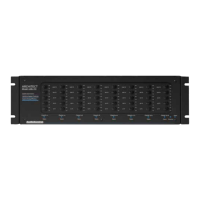
